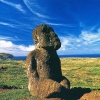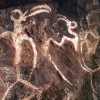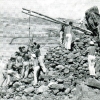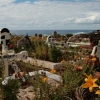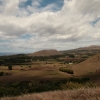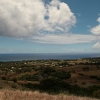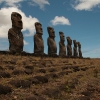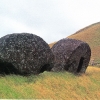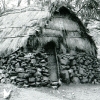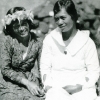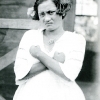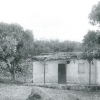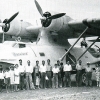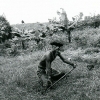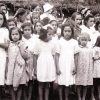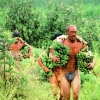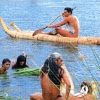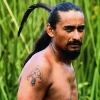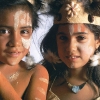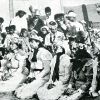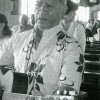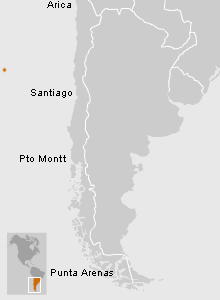According to the earliest dates of occupation, Rapa Nui or Easter Island was first settled around 100 A.D. Hotu Matu’a led the first migration that brought the Hanau momok people from somewhere in Polynesia. The second wave of colonists, the Hanau eepe, arrived soon after. After the death of Hotu Matu’a, clashes between the different groups escalated as the island’s available natural resources failed to meet the needs of its growing population. These conflicts precipitated a crisis within the classic Rapa Nui culture, leading to a revolt against the elite Ariki class and their religious practices. The reorganization of society that followed witnessed intergroup conflict, cannibalism and the destruction of the Ahu-Moai the platforms or altars upon which the moai statues were placed.
The arrival of the Dutch navigator Jakov Roggeveen in 1722 marked the beginning of Rapa Nui’s historical age, initiating a time of contact and acculturation with the western world that lasted until 1833. During that time, the Easter Island inhabitants had limited contact with Europeans, mainly through coastal trade in which the natives bartered vegetables, poultry and drinking water for wooden and metal items and engaged in sexual traffic of women. For Rapa Nui society, this was a time of social decline, food scarcity and frequent internal conflicts. In 1862, part of the population was enslaved and taken to Peru, reducing the number of inhabitants by more than half. Between 1864 and 1872, two French missions were established on the island, bringing the islanders into regular contact with Europeans. This changed their traditional way of life, as Catholicism gradually replaced ancient religious practices and the population became concentrated around the missions. As a result, the time-honored territorial division system collapsed, productive systems disintegrated and land ownership fell mostly into the hands of foreigners, who used their claims for sheep ranching. In the end, the population of Easter Island numbered just 175 inhabitants, who dwelt on the land as tenant farmers.
In 1888, Captain Policarpo Toro took formal possession of Rapa Nui in the name of Chile. Government officials and three families of colonists were sent to inhabit the island. After this, contact with French Polynesia diminished and the Europeans remaining on the island departed. Despite Chile’s claim, Rapa Nui was completely abandoned by Chilean officialdom and the island’s economy reverted to traditional farming and fishing activities as many of the former inhabitants returned to occupy their ancestral lands.
In 1892, the Chilean Government signed an agreement to lease the land and public property on Rapa Nui to a French citizen, and in 1895 the enterprise of Merlet y Cía. was established on the island, transforming Rapa Nui into a sheep ranch. This ushered in a new period of abuse of the local inhabitants, who were once more reduced to poverty.
In 1953, Rapa Nui came under the control of the Chilean Navy, which regularized the situation on the island and began a new stage of infrastructure development and contact with the outside world. Scientific expeditions, such as those of Thor Heyerdahl and William Mulloy, reintroduced the Rapa Nui to their ancestral past and stimulated interest in their cultural heritage, revitalizing the production of handicrafts. Islanders began to successfully demand more rights.
By 1965 the island’s inhabitants were becoming more open to the outside world, thanks to improved communications, the increasing flow of foreigners and growing migration between Rapa Nui, the continent and Tahiti. Recent times have witnessed a revitalization of the traditional family lifestyle, with land considered a key component in the continuity of Island culture. Tourism has become a cornerstone of the island economy. Currently, there are 4,647 individuals who claim official Rapa Nui ethnicity, making up 0.67% of Chile’s total indigenous population.






































